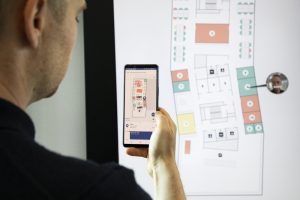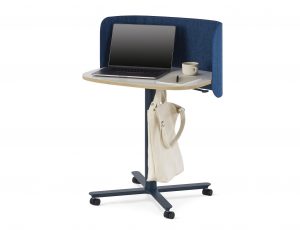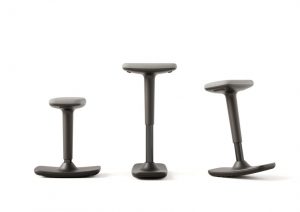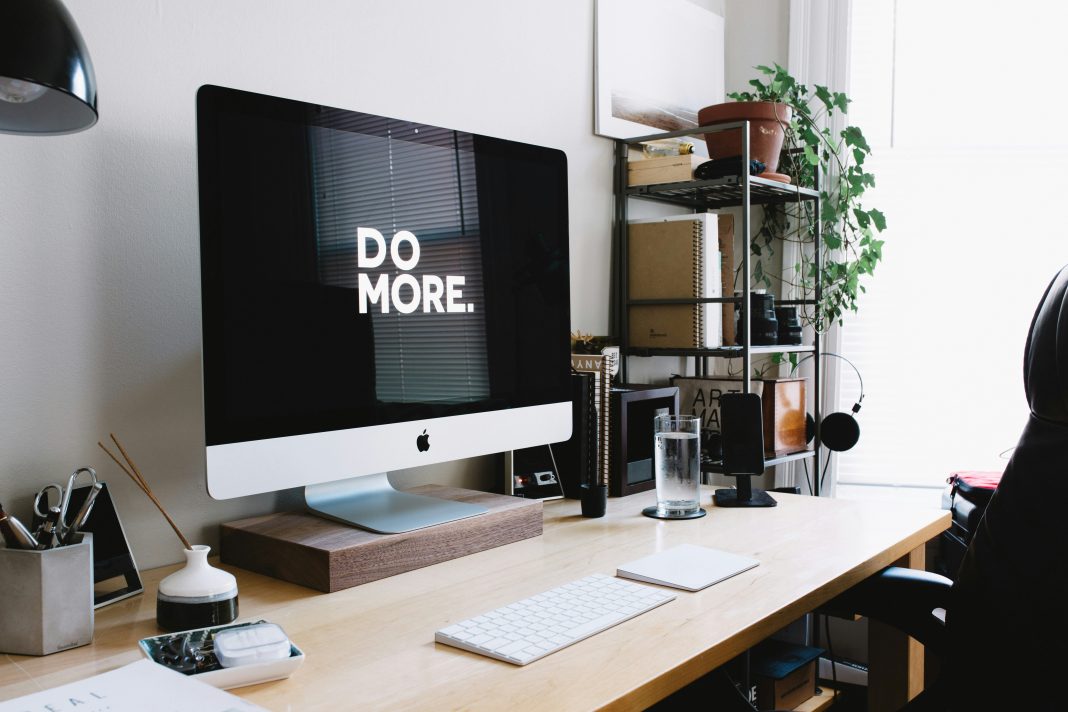Shuli Steele helps us unlock the secrets of workplace alchemy by deconstructing the office into four key employee resources.
A CRE friend recently mentioned that distributed portfolio management is the new foundation of workplace strategy. Another considers space optimization and higher utilization as workplace strategy, and a third indicated that implementing leadership’s edicts is the only way to produce acceptable results. These are macro-level responses to designing our workplace settings. They are sweeping, wholesale changes intended to promote certain attendance and productivity levels, and justify millions in leases, maintenance fees, and overall facilities costs.
Let’s consider micro-level responses as well and deconstruct the office to create greater value within its resources. Offices date back hundreds of years and were made for writers, record-keepers, and scribes who needed a place away from the noise and dirt of shop floor manufacturing. Fast forward to 2020 when office workers in every industry scrambled to figure out what to bring home and how to create a similar office environment.
Deconstructing the Office
“Employees are looking for offices that are both effective in supporting their ability to focus on their work and offer a more desirable mix of experiences,” said Janet Pogue McLaurin, Global Director Workplace Research, Principal, Gensler.
Understanding how workers spend their time and what experiences and work settings they need to perform best is critical for business performance and employee engagement.
A desirable mix of experiences translates to a variety of office designs with multiple combinations of core resources:
- Stored Information
- Screen Technology
- Work Surfaces
- Seating
Stored Information
Employees count on access to information to successfully complete tasks. Whether digital cloud stores, print materials such as HR documents and floor plans, or peer knowledge, employees need access to these data to successfully complete projects. Water cooler conversations and informal talent grabs as well as scheduled meetings count as stored information exchanges and greatly factor into deconstructing the office. We rely on other employees’ skills and experiences for best practices, processes, and pitfalls in completing similar work.
Remote work changed not only locations but the landscape of office hours resulting in the need for 24/7 access to far more materials than in the past. This reinforces the need for expanded digital content as well as better systems to share individual knowledge. Query employees for their needs:
- What information exists today in company repositories that I need to complete my work?
- Who vets the information and can validate it’s accuracy, quality, and authenticity?
- Who owns company data and authorizes access?
- Which mentors’ skills and experiences do I need access to, to be successful?
- How do I access and interact with other departments’ data?
- What public sources are necessary to complete my work?
- How essential is AI to my work? What sources are considered accurate as input? How are existing data biases resolved to increase value?
Consider organization data first as this is a foundational resource. Identify who manages accuracy, currency, quality, and access. Allow employees to determine which datasets are critical inputs for them to completing tasks. Recognize that in the past employees often received access based on titles and departments. A silver lining of the pandemic is a shift in this mindset to more dynamic access based on project work. The boundaries that departments drew are becoming more porous as employees prove working with other business lines and with expanded inputs often produce better results.
Screen Technology
We’ve counted on screens to share data since the first CRT was produced (circa 1897). Today we carry them without thought and wear them easily on ourselves. Applying the simplicity of t-shirt sizing, there are small screens designed for individual use, medium screens for peer-to-peer group interaction, and large screens for one-to-many presentations, town halls, signage, etc. As size goes up, interaction with what’s shared goes down.

Considering the lightning speed with which technology advances, well-designed systems will eventually reduce our burden to just carrying our own interfaces (e.g., keyboard, mouse, wearable viewers, haptic suits). Wherever our office is, systems will recognize who we are and permission us to the technology and information we need for the day.
Work Surfaces
Desks have shrunk due to advances in technology and economical allocations, not necessarily due to the needs of employees. In fact, research shows that people assimilate information better when hand writing notes (Shibata, Omura). Employees need a variety of options to match the type of work being done—whether learning or producing—and should be able to easily navigate choices to foster movement throughout an area. Employees given chances to wander with their thoughts often come up with more creative ideas; there are numerous studies that point to walking as a key driver of creativity (Tilson).

Sit / stand desks are great for solo work but the nature of a mechanical device that raises and lowers a surface while hosting a laptop and other personal devices limits both size and mobility in an office setting. Consider desks for solo and small group work. Include counter and bar height surfaces with commensurate seating but also consider these heights with no seating for informal gatherings. Put as much as possible on wheels with locking casters and ensure some of the furnishings can fit through doors for impromptu reconfigurations.
Go beyond horizontal surfaces and include writable walls and other vertical dividers such as glass partitions. Imagine having a surface to quickly jot down an idea wherever you are and the ability to easily store and share these musings with others. Surfaces should be activated throughout an office increasing the fungibility of every area.
Seating

We’ve considered where we sit (office, home, third spaces, solo, group) and how we sit (ergonomics) but have spent less time connecting when we sit with well-being and productivity. Numerous research papers have highlighted the detrimental effects of sitting and benefits of activity. Imagine prototyping options where employees can check out seating that suits particular tasks. Some may want kneeling chairs while others prefer exercise balls or rocking stools. These unique options were likely explored during the pandemic and should be honored when asking employees to return to the office. Some employees may have found higher productivity when walking during meetings and want to eschew chairs altogether for part of the day.
Process & Results
Start with stored information as this is the most critical resource and takes into account not only digital content but also employee knowledge, ideas, and experiences. This highlights skills that are highly coveted and begins to inform when employees should gather. Next consider technology and how digital connections can mimic equitable experiences for participants. Consider how essential non-verbal language is to a conversation and factor in its impact on decisions being made.
Offer a variety of work surfaces and commensurate seating. Surfaces can be desks, tables, writable walls, displays, pin boards, chalk walls … let employees imagine what works for them and consider offering these as part of a contract: if I supply this, you will produce acceptable results. Seating can be chairs, rolling cushions, exercise balls, rocking chairs, and even scrappy prototyped ideas. The point is to offer enough choice to employees that they have agency in choosing what works for them at any given time.
Workplace strategy has evolved from SF/person to SF/event. Let employees select the best combination of “S”s for an event. Some will be long-standing events such as the repetitive tasks associated with accounts receivables or call centers. Others will be unique events based on information sharing and decision-making. Give employees agency and then hold them accountable for the results. This creates a sustainable model for measuring the value of place. The deconstructed office is a new form of workplace alchemy and creates new models of autonomy, agency, and accountability.
Consider what was boxed up in 2020 and unpack the office itself to better plan the resources our employees need.
References
Gensler (2022, December) “New Survey Reveals That Employees Want the Office To Be a Place To Get Work Done, Not Just Connect,” Retrieved from:
https://www.gensler.com/press-releases/what-employees-want-from-the-office-2022
Shibata, Hirohito, Omura, Kengo (2018, June) “Reconsideration of the Effects of Handwriting: Comparing Cognitive Load of Handwriting and Typing,” Retrieved from:
https://www.jstage.jst.go.jp/article/mta/6/4/6_255/_article/-char/ja/
Tilson, Tracy (2021, October) 3 Reasons Why Walking Boosts Creativity Retrieved from:


